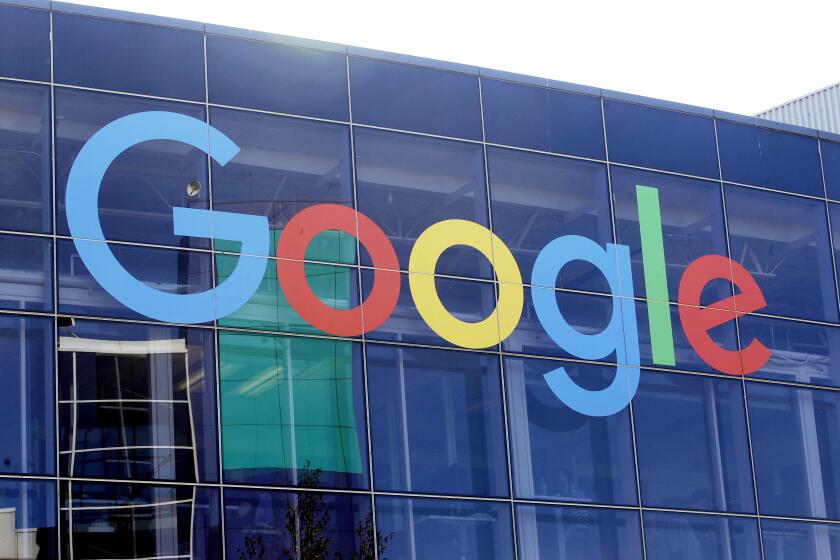CES 2016: Dish offers a DVR for the stream-and-binge generation
- Share via
Having settled almost all the lawsuits that the major TV networks have filed against it, Dish Network returned to the Consumer Electronics Show in Las Vegas on Tuesday with another boundary-stretching, lawyer-enriching approach to recording and viewing television shows.
Its latest set-top box is the Hopper 3, the third edition of the high-capacity TV receiver it introduced in 2012. The original one enabled Dish subscribers to record automatically every prime-time show aired on the major broadcast networks, then play them back with commercials automatically skipped. The second generation of the device added the ability to watch recorded shows via the Internet or transfer them to an iPad to view offline.
Join the conversation on Facebook >>
The new version can record twice as many shows at the same time -- 16 -- and has enough room to store 500 hours of high-definition video, which will make it that much easier to capture every single episode of any show one might be curious about. The box also makes it possible to watch four shows at the same time in high definition on a single TV set (Dish calls it “Sports Bar Mode,” reflecting what may be the best application of that feature).
At the same time, Dish is introducing HopperGo, a portable, battery-powered storage device that can hold up to 100 hours of recorded TV. Think of it like a video iPod but without a screen, something you’d plug into a TV at a hotel or a friend’s house to binge-watch “The Americans.”
The Hopper 3 doesn’t exactly thumb its nose at copyright owners, but some of its features operate in the same less-than-fully-settled legal area that previous versions ventured into. The Supreme Court declared in the 1984 Sony Betamax ruling that it’s not copyright infringement for consumers to record broadcast TV shows in their homes for later viewing. And as long as a device has a significant non-infringing use, the court ruled, manufacturers can sell it without fear of being held liable for contributory infringement. But the court took no position on whether consumers could legally record and store entire seasons of TV shows, which is one of the things the Hoppers were built to do.
The four major networks sued Dish over the automatic copying, commercial-skipping and remote-viewing features of the Hoppers, but most reached pre-trial settlements in which Dish agreed to roll back some of the commercial-skipping functions. The lone exception was Fox, and a federal judge ruled last year that the disputed features did not violate copyright law -- but they might violate Dish’s contracts with Fox. That lawsuit is still pending.
The networks are understandably nervous about technologies that can undermine their shows’ value to advertisers. Nevertheless, Dish and broadcasters have a shared interest in persuading consumers to keep paying for network TV, and the Hoppers serve that interest.
Fees from cable and satellite broadcasters have become vital to the broadcasters as the prime-time audience has fragmented. Yet pay-TV subscriptions are in decline as a new generation of “digital natives” -- Americans who’ve grown up watching videos online and on computers, not TV sets -- eschews costly bundles of channels in favor of Netflix, Hulu and other online services.
(Recognizing the trend in favor of on-demand TV, Dish launched its own low-cost online TV service, Sling TV, at last year’s CES. A growing number of broadcast and cable networks have jumped into the market too, selling subscriptions to online feeds of their programming.)
The Hoppers allows Dish customers to replicate the on-demand experience that Netflix and Amazon offer, albeit to a more limited degree. If Dish’s broadband Internet service was as popular and speedy as Comcast and Time Warner Cable’s, then maybe the company wouldn’t have to cram so many tuners and so much hard-drive capacity into its set-top boxes, or offer 64-gigabyte portable storage devices. But it doesn’t, so it continues to find new ways to give customers more control over its old-school TV broadcasts.
The Hopper 3 will be available later this month for the same fee ($12 per month) as previous models. The HopperGo is slated to be released in the spring for $99.
Healey writes editorials for The Times. Email him or follow his intermittent Twitter feed: @jcahealey
MORE FROM CES
Faraday Future unveils Batmobile-like electric concept car at CES
CES kicks off with prediction that global tech sales will fall 2% this year
A virtual-reality adventure inspired by ‘The Martian’ is about to be unveiled at CES







